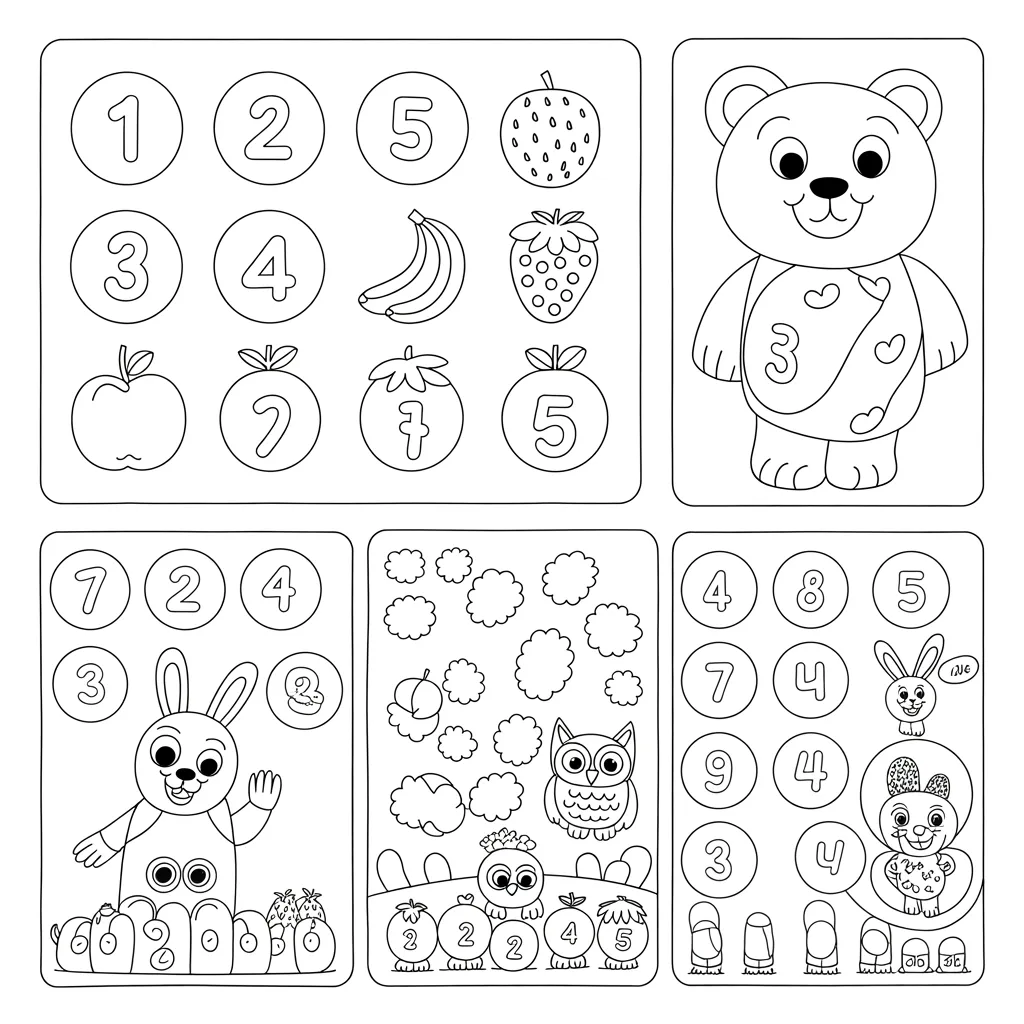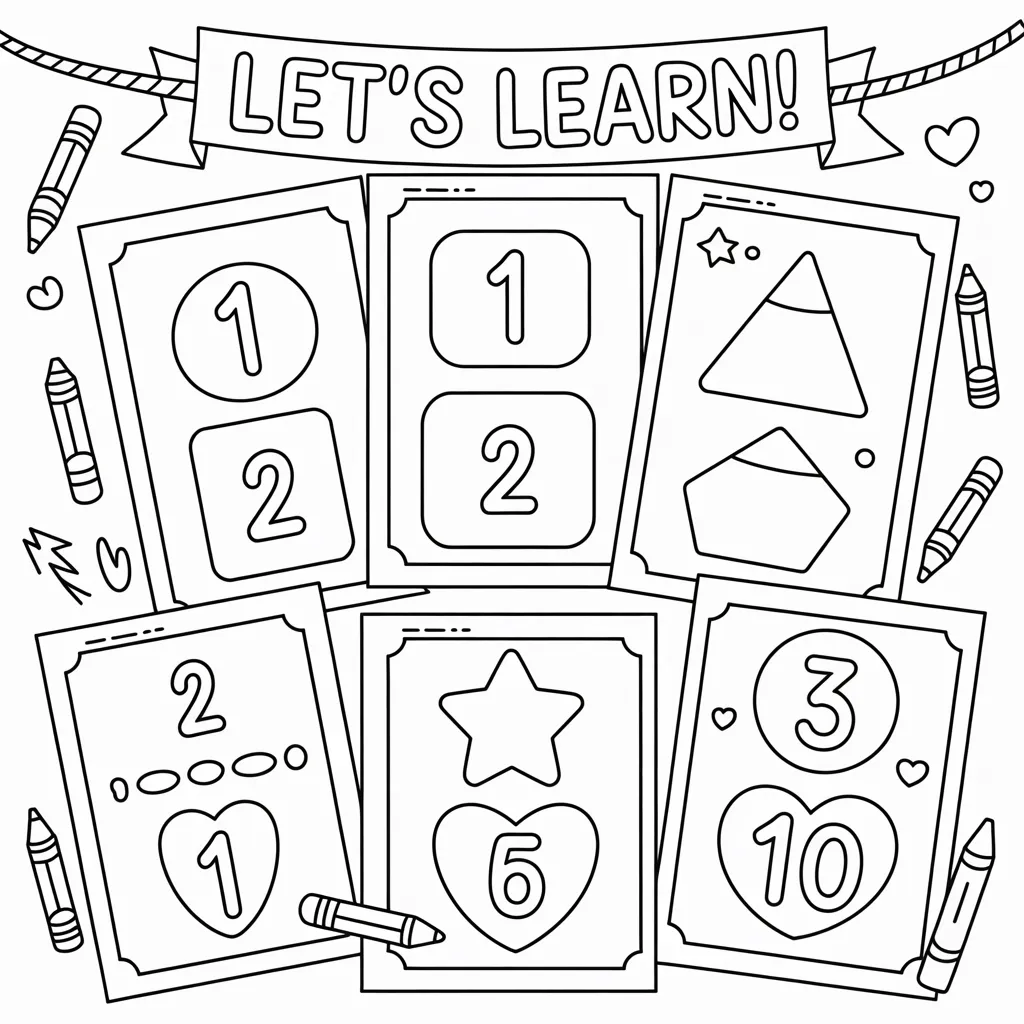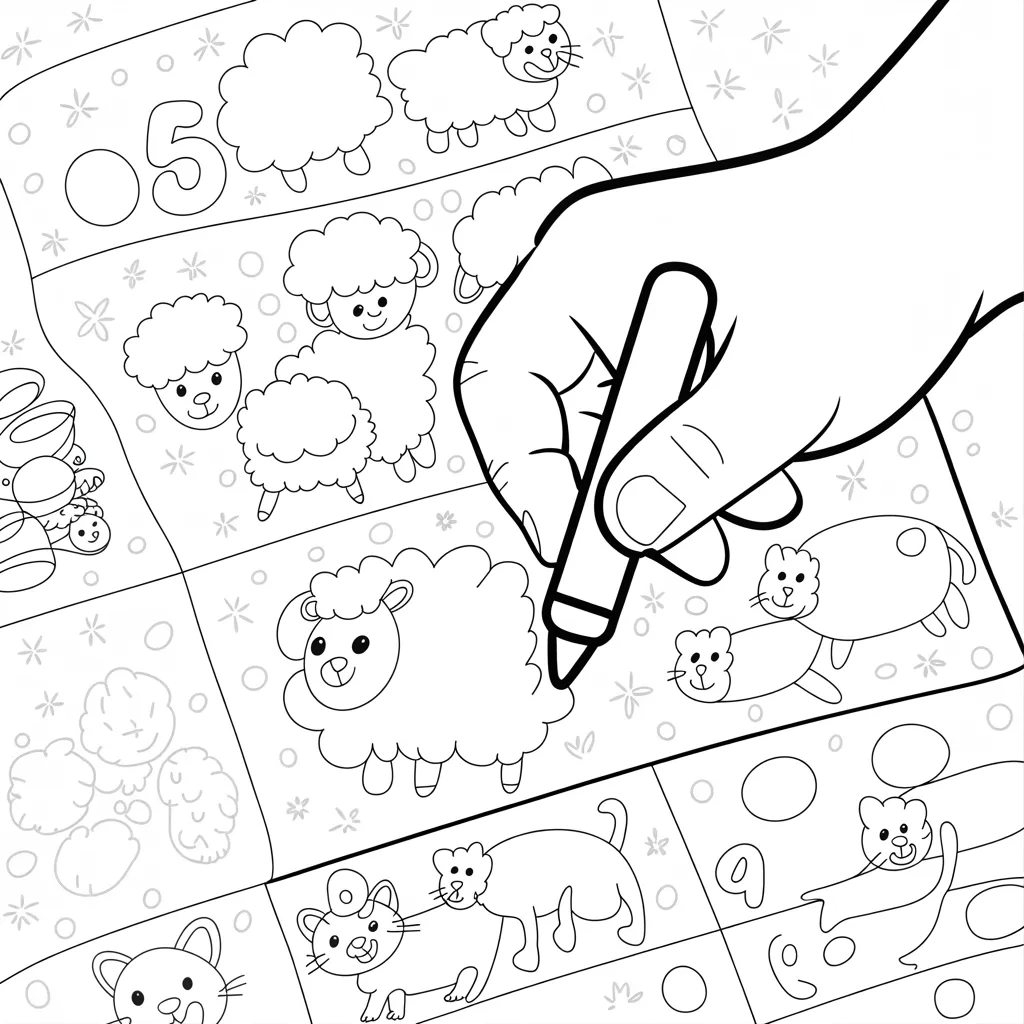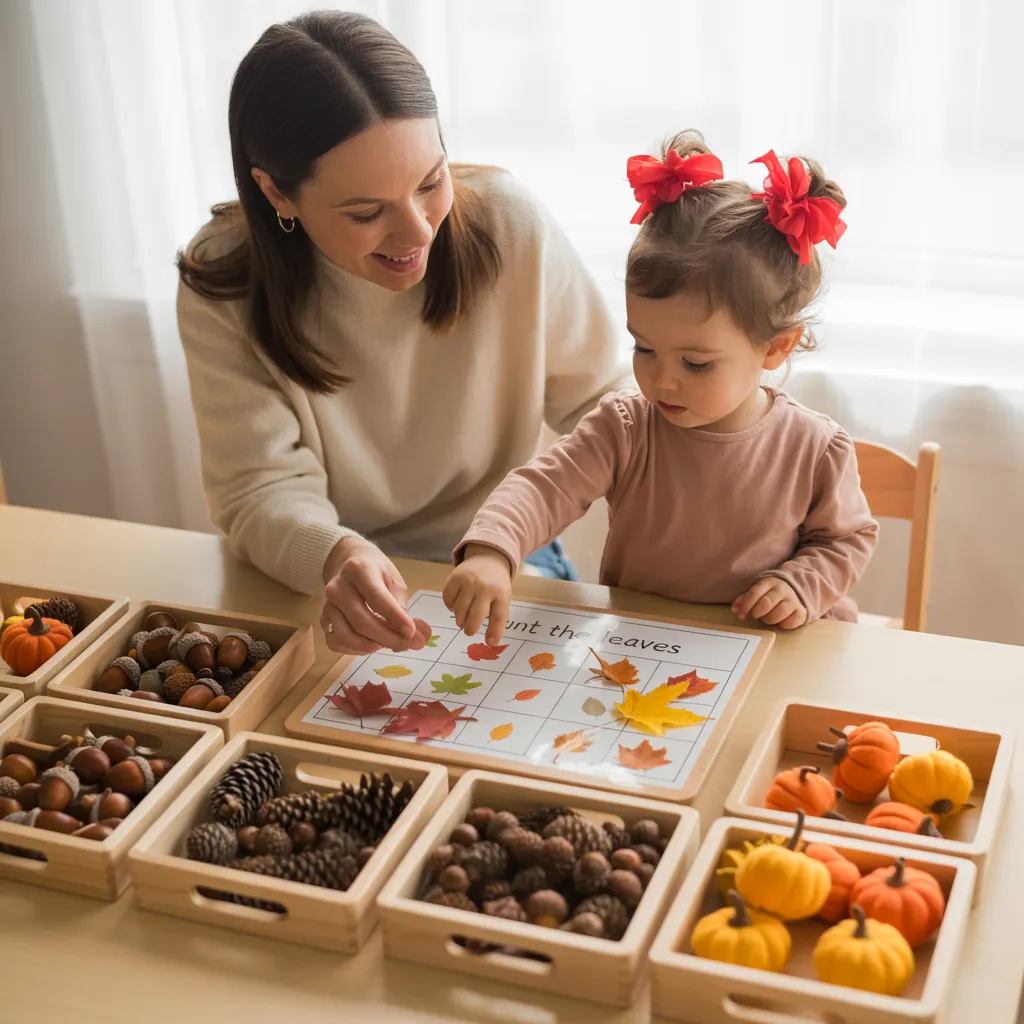Count and color worksheets offer a perfect blend of mathematics and creativity that captivates young learners during their crucial developmental years. These dual-purpose activities invite children to practice counting objects or identifying numbers, then reward them with the enjoyable sensory experience of coloring. This powerful combination engages multiple learning pathways simultaneously—visual recognition, fine motor skills, number sense, and artistic expression all develop together through one simple activity. For parents and educators looking to support early childhood development, count and color worksheets provide an accessible, low-cost solution that children genuinely enjoy. Unlike purely academic exercises that might feel overwhelming to young learners, these worksheets transform essential skill-building into a playful experience that children eagerly anticipate. The versatility of count and color worksheets makes them suitable for various settings—from classroom centers to quiet home activities—providing educational value in an approachable format.
Click on picture to get your PDf



The Educational Power of Count and Color Worksheets
Count and color worksheets create a perfect learning environment by combining left-brain analytical thinking with right-brain creative expression. This dual activation helps children develop more robust neural connections while they practice essential skills:
- Number recognition: Children learn to identify numerals through repeated exposure
- Counting skills: Worksheets reinforce one-to-one correspondence and sequential counting
- Color recognition: Basic and advanced color vocabulary develops naturally
- Fine motor development: Precise coloring strengthens hand muscles needed for writing
- Direction following: Children practice reading and following multi-step instructions
- Attention span: Completing worksheets builds concentration and task persistence
How Count and Color Worksheets Support Academic Readiness
Research consistently shows that early numeracy skills strongly predict later mathematical achievement. Count and color worksheets introduce mathematical concepts in a non-threatening way that builds confidence. When children successfully complete these activities, they develop a positive association with numbers and counting that can prevent math anxiety later in their academic journey.
The coloring component provides additional benefits beyond making the activity more appealing:
- Visual discrimination improves as children learn to stay within lines
- Hand-eye coordination develops through controlled coloring movements
- Artistic expression encourages creative thinking and decision-making
- Sense of accomplishment builds when children complete both counting and coloring tasks
Types of Count and Color Worksheets for Different Age Groups
Preschoolers (Ages 3-4)
Beginning count and color worksheets for this age group should feature:
- Simple counting from 1-5: Worksheets with clear, distinct objects to count
- Large coloring areas: Generous spaces that accommodate developing fine motor skills
- Familiar themes: Objects and characters children readily recognize
- Color-by-number with color words: Introducing color vocabulary alongside number practice
Effective worksheets for preschoolers include counting animals, fruits, or toys, with each group requiring a specific color once counted correctly. These worksheets should include clear visual cues and minimal text to support independent work.
Early Elementary (Ages 5-6)
As children progress, count and color worksheets can incorporate:
- Extended number sequences (1-10 or 1-20): Building greater counting fluency
- Simple addition and subtraction: Using visual supports for early operations
- Color-by-code activities: Following more complex directions
- Seasonal themes: Connecting counting practice to calendar events and holidays
- Skip counting: Introduction to counting by 2s, 5s, or 10s
These intermediate worksheets might feature hidden pictures that reveal themselves when numbered sections are colored correctly, or color-by-sum activities where children solve simple equations to determine the appropriate color.
Advanced Skills (Ages 6-8)
For children mastering basic counting, worksheets can introduce:
- Double-digit numbers: Expanding numerical understanding
- Multiplication concepts: Arrays and repeated addition
- Fraction awareness: Coloring fractional parts of wholes
- Geometry integration: Counting shapes or sides of shapes
- Measurement practice: Counting units of length, weight, or volume
These advanced worksheets might include solving math puzzles where the answers dictate a specific coloring pattern, creating a satisfying reveal when completed correctly.
How to Create Custom Count and Color Worksheets
Digital Tools for Personalized Learning
Several online platforms and applications allow parents and teachers to create customized count and color worksheets:
- Educational worksheet generators: Websites that allow customization of counting ranges, themes, and complexity
- Drawing applications: Programs that enable creation of outline images with numbered sections
- Printable template libraries: Collections of basic outlines that can be adapted with counting challenges
DIY Count and Color Worksheets Using Household Items
For a more personal touch, create custom worksheets with:
- Clear contact paper over coloring books: Add counting elements to existing coloring pages
- Rubber stamps with number overlays: Create repeated patterns to count and color
- Hand-drawn templates: Sketch simple images with numbered sections based on a child’s interests
- Family photos with counting elements: Print family pictures and add countable items
Integrating Count and Color Worksheets into Learning Routines

For maximum educational benefit, consider these implementation strategies:
- Regular practice sessions: Set aside consistent short periods for worksheet activities
- Progressive difficulty: Gradually increase complexity as skills develop
- Thematic connections: Align worksheet subjects with other learning topics
- Social learning opportunities: Create partner activities where children can count and color together
- Extension activities: Use completed worksheets as prompts for storytelling or discussion
Making Count and Color Worksheets More Engaging
Transform standard worksheets into exciting learning experiences:
- Add movement breaks: Have children hop or clap the number of items before coloring
- Incorporate sensory elements: Use textured coloring tools or scented markers
- Create mysteries: Design « secret picture » worksheets revealed through proper counting and coloring
- Include self-checking features: Create answer keys that children can reference independently
- Celebrate completion: Create a display area for finished worksheets to build pride in achievement
Conclusion
Count and color worksheets represent a valuable educational tool that effectively combines fundamental mathematical concepts with creative expression. By incorporating these versatile activities into home or classroom routines, parents and teachers provide children with enjoyable opportunities to strengthen essential early learning skills. The beauty of count and color worksheets lies in their ability to make practice feel like play—children eagerly engage with numerical concepts when paired with the rewarding sensory experience of coloring. Whether using ready-made printables or creating custom materials, these activities offer a low-cost, high-impact approach to building academic foundations. Begin incorporating count and color worksheets into your child’s routine today, and watch as they develop greater confidence with numbers while nurturing their creative spirit.
FAQ About Count and Color Worksheets
Q: How often should children use count and color worksheets? A: Quality matters more than quantity. For preschoolers, 5-10 minutes several times a week is sufficient. Elementary-aged children might enjoy 10-15 minute sessions 3-4 times weekly. Always follow the child’s interest level and stop before frustration sets in.
Q: My child rushes through counting to get to the coloring part. How can I encourage more careful counting? A: Try turning counting into a physical activity—have them touch each item while counting aloud. You can also use a « counting wand » (pointer) to make counting more official and important. Consider worksheets where the counting determines which colors to use, making accurate counting necessary for correct coloring.
Q: Are digital count and color activities as effective as paper worksheets? A: While digital activities offer engagement and immediate feedback, physical worksheets provide valuable fine motor practice and tactile experience that digital options cannot replicate. Ideally, offer a balance of both, using digital for variety and paper worksheets for hand strength development.
Q: How can I help my child transition from counting objects to recognizing numbers on worksheets? A: Create a bridge by using count and color worksheets that include both the numeral and the corresponding quantity of objects. Gradually introduce worksheets with just the numeral, occasionally referring back to the quantity-based worksheets if reinforcement is needed.
Q: Can count and color worksheets help children with learning differences? A: Absolutely! These worksheets can be especially beneficial for children with learning differences. The visual structure, clear expectations, and combination of analytical and creative thinking make them adaptable for various learning needs. For children who need additional support, try enlarging worksheets, using raised lines for tactile feedback, or breaking the activity into smaller segments.
